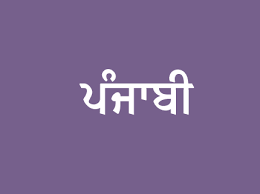Language/Panjabi/Grammar/Questions
Hi Panjabi learners! 😊
In today's lesson, we will be learning about how to ask questions in Panjabi. Asking questions is an important part of any language, and it's essential to understand the rules and structure of Panjabi questions in order to communicate effectively.
Basic Question Structure
The basic structure of a question in Panjabi is similar to that of English. It follows the pattern of subject + verb + object. For example:
- ਤੁਸੀਂ ਕਿਵੇਂ ਹੋ? (Tusīṁ kivēṁ ho?) - How are you?
In this sentence, the subject is ਤੁਸੀਂ (tusīṁ) - you, the verb is ਕਿਵੇਂ (kivēṁ) - how, and the object is ਹੋ (ho) - are.
Yes/No Questions
Yes/no questions are questions that can be answered with either a yes or a no. In Panjabi, these types of questions are formed by adding the particle ਕੀ (kī) at the end of the sentence. For example:
- ਤੁਸੀਂ ਕਿਵੇਂ ਹੋ? (Tusīṁ kivēṁ ho?) - Are you okay?
- ਤੁਸੀਂ ਕਿਵੇਂ ਹੋ ਕੀ? (Tusīṁ kivēṁ ho kī?) - Are you okay?
The only difference between the two sentences is the addition of the particle ਕੀ (kī).
Wh-Questions
Wh-questions are questions that begin with a wh-word such as who, what, when, where, why, and how. In Panjabi, these types of questions are formed by adding the particle ਕਿ (ki) at the beginning of the sentence. For example:
- ਤੁਸੀਂ ਕਿਵੇਂ ਹੋ? (Tusīṁ kivēṁ ho?) - Are you okay?
- ਕਿਵੇਂ ਤੁਸੀਂ ਹੋ? (Kivēṁ tusīṁ ho?) - How are you?
The only difference between the two sentences is the addition of the particle ਕਿ (ki).
Other Question Structures
In addition to the basic question structure and the yes/no and wh-question structures, there are other ways to form questions in Panjabi.
Tag Questions
Tag questions are questions that are formed by adding a tag at the end of a statement. In Panjabi, these types of questions are formed by adding the particle ਨਾ (nā) at the end of the sentence. For example:
- ਤੁਸੀਂ ਕਿਵੇਂ ਹੋ? (Tusīṁ kivēṁ ho?) - Are you okay?
- ਤੁਸੀਂ ਕਿਵੇਂ ਹੋ ਨਾ? (Tusīṁ kivēṁ ho nā?) - Are you okay, right?
The only difference between the two sentences is the addition of the particle ਨਾ (nā).
Negative Questions
Negative questions are questions that are formed by adding a negative word at the beginning of the sentence. In Panjabi, these types of questions are formed by adding the particle ਨਹੀਂ (nahīṁ) at the beginning of the sentence. For example:
- ਤੁਸੀਂ ਕਿਵੇਂ ਹੋ? (Tusīṁ kivēṁ ho?) - Are you okay?
- ਨਹੀਂ ਤੁਸੀਂ ਕਿਵੇਂ ਹੋ? (Nahīṁ tusīṁ kivēṁ ho?) - Aren't you okay?
The only difference between the two sentences is the addition of the particle ਨਹੀਂ (nahīṁ).
Conclusion
In this lesson, we have learned about the different ways to form questions in Panjabi. We have seen that the basic structure of a question is subject + verb + object, and that yes/no and wh-questions are formed by adding the particles ਕੀ (kī) and ਕਿ (ki) respectively. We have also seen that tag questions and negative questions are formed by adding the particles ਨਾ (nā) and ਨਹੀਂ (nahīṁ) respectively.
If you have any questions, please ask them in the comments section below.
Feel free to edit this wiki page if you think it can be improved. 😎
Related Lessons

